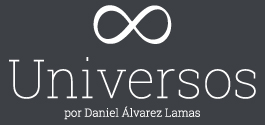Be a minimally Invasive Manager
So much of what we call management consists in making it difficult for people to work. —Peter Drucker
One of the hardest things for entrepreneurs to learn is that most of the time, the best thing they can do is get out of the way of the people actually doing the work. That’s the core tenant of what I call “Minimally Invasive Management.”
The idea reflects the struggles of tech-centered start-ups to rethink the role of professional managers. These companies tend to be run by engineers and creatives, not MBAs. At least in Silicon Valley, management is becoming just another operating function, like payroll and finance and sales , all serving to facilitate the work of the technically and creatively skilled who do the heavy lifting.
, all serving to facilitate the work of the technically and creatively skilled who do the heavy lifting.
Be aware, there’s a risk here that the pendulum swings too far, and companies end up under-managed. Skilled managers still matter – Minimally Invasive Management is not the same as no management at all.
You’ve heard of software as a service? This is management as a service. Managers serve the people doing the work. And nobody is more important in an organization than the people doing the work.
In this brave new world, management’s role should be to remove the impediments in front of the people doing the work so that they can do it well – and so they can be satisfied, rewarded and motivated in their work.
When you start your company, with a half-dozen people in a room, every job is important. Everyone is involved in every decision. Everybody is empowered. Everybody feels like a stakeholder. But then you add another half dozen people …. and another half dozen … and another half dozen…
And then you start to see chinks in the armor. You start with a bunch of doers, but fall into dysfunction. Priorities aren’t being set. Conflicts aren’t being resolved. Communications aren’t clear. People don’t know what decisions are being made or why they’re being made. Morale starts to fade – and things slow down. That’s bad: in the world we all operate in, speed is everything.
So those are the signs that you need management. Not because people need a boss, but because people need someone to resolve the issues that are stopping them from doing their work. Managers aren’t ball carriers. They’re running interference for the ball carriers.
In the world of minimally invasive management, managers have three primary jobs: they need to hire; they need to develop and serve their people; and they need to fire.
Hiring the best people is the easiest way to build a high functioning, competitive organization. If you hire badly, you’ll spend most of your time as a manager dealing with personnel issues and you will find that 75% of your time is dealing with problems. If you hire well, you can invest more time on issues like strategy, innovation, and goal-setting. Management can spend the bulk of its time taking a C+ player and turning him into a B- player, or they can take an A- player and make them into an A player. Where would you want them to spend their time? The answer is obvious.
Job two is staff development. A good manager doesn’t make people cogs in a wheel, but instead gets all the wheels spinning together. That starts with giving people clear priorities and communicating well what’s going on in the organization – what decisions are being made and why they are being made. It’s about taking individuals and making them 10% or 20% or 50% better than they ever thought they could be.
That said, you can hire as well as you can, and you can develop your people strongly, but ultimately you are going to be wrong sometimes. Jobs change. People don’t step up to new roles. Organizations change. You need to understand who can improve and who is simply incompetent.
Managers need to know the difference. There are high costs to getting rid of a B player if they have the competence to be a B+ or even an A player. But if they don’t, you need to resolve that quickly. Organizations regress to the mean. If you have a bunch of B players that are not advancing, your organization will start to regress to their level.
Adding managers to an entrepreneurial organization is always difficult. Those first half dozen people you brought in felt like stakeholders. They were involved in every decision. You’re now asking them to pull back, focus more on their work and not be involved in every decision. This involves trust. A great manager has to create that trust with their organization. They have to do it through communication, and predictable and reliable behavior. There won’t always be unanimous agreement, but management must be fair and honest – and work hard for the benefit of the team. And ultimately you need managers who know that, most of the time, they need to get out of the way and let people do their work.
Fuente: Randy Komisar (HBR)





